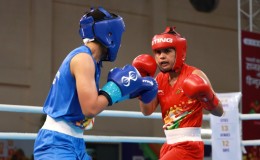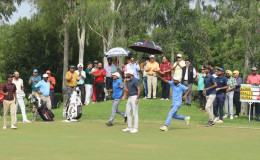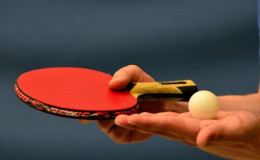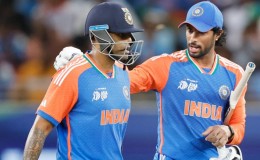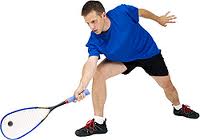
- Squash is an indoor game(originated in London)
- Squash is a sport played by two players in a four walled court.
- It is played with a small hollow rubber ball and a racquet.
- Played by more than 185 countries
*Though squash has not been recognized as an Olympics sports so far and again missed being instated for the London Olympics Games, yet it has been successful in getting wider acceptance in multi sports events like commonwealth Games and Asian Games since 1998. It is also a regular sport at the Pan American Games since 1995.
Squash court:
- Standard size of the softball court is 32 feet (9.75meters) in length and 21 feet (6.4 meters) in width, the front wall has an outline of 15 feet or 4.57 meters and front wall with height of 7 feet or 2.13 meters above the ground (according to London codification later 1920s).
- There is a service line at the front wall, measuring 6 feet or 1.83 meters above the ground.
- It also features a tin/net with 19 inches
- *Dimension of Games played under U.S rules (where traditional court is used) and which is referred as hardball squash in modern day is:
- 18 feet and 16 inches or 5.64 meters, with a much lower tin of 15 inches or 38 centimeter high.
- *Racquetball courts are 20 feet (6.1 m) wide and 40 feet (12.2 m) in length, so it is relatively easy to install a back wall, producing a squash court of 20 feet (6.1 m) wide by 32 feet (9.75 m) long.
Squash Racquet:
- Made up of composite materials or metals (graphite, Kevlar, titanium, boron) with synthetic strings
- Maximum dimensions of 686 mm (27.0 in) long and 215 mm (8.5 in) wide,
- Maximum strung area of 500 square centimeters (90 sq in).
- The permitted maximum mass is 255 grams (9.0 oz).
Squash ball:
- They are made with two pieces of rubber compound, glued together to form a hollow sphere and buffed to a matte finish.
- Squash balls are between 39.5 and 40.5 mm in diameter, and have a mass of 23 to 25 grams
- Different balls are provided for varying temperature and atmospheric conditions and standards of play.
- The "double-yellow dot" ball, introduced in 2000, is currently the competition standard, replacing the earlier "yellow-dot" ball.
- There is also an "orange dot" ball, which is even less bouncy than the "double-yellow dot" ball.
Rules:
- Just before the match, the players spin a racket (usually up or down of logo) to decide who serves first.
- For a legal serve, one of the server''s feet must be touching the service box, not touching any part of the service box lines, as the player strikes the ball.
- After being struck by the racket, the ball must strike the front wall above the service line and below the outline and land in the opposite quarter court.
- Shots struck above or on the out line, on any wall, are out.
- The bottom line of the front wall marks the top of the ''tin'', a half meter-high metal area which if struck means that the ball is out.
- The middle line of the front wall is the service line and is only relevant during serves.
- The receiving player can choose to volley a serve after it has hit the front wall. If the server wins the point, the two players switch sides for the following point.
- Players typically return to the center of the court after making a shot.
Points are awarded if-
- The receiver fails to strike the ball before it has bounced twice.
- The receiver hits the ball out (either on or above the outline, or on the tin)or misses the front wall.
- Stroke: where the receiver obstructs the server during the point.
Shots played in squash:
- Straight drive.
- Boast (or angle)
- Volley
- Drop shot
- Lob
- Cross Court
- Kill
- Trickle boast.
- Squeeze boast
- Skid boast
- Nick shot
- Back wall shot
Official:
- A match referee having sole power in the proceedings of the game
- He is very powerful in this department of sports.
Governing bodies:
- World Squash Federation (WSF), at international level.
- Squash Racquets Federation of India (in India)


